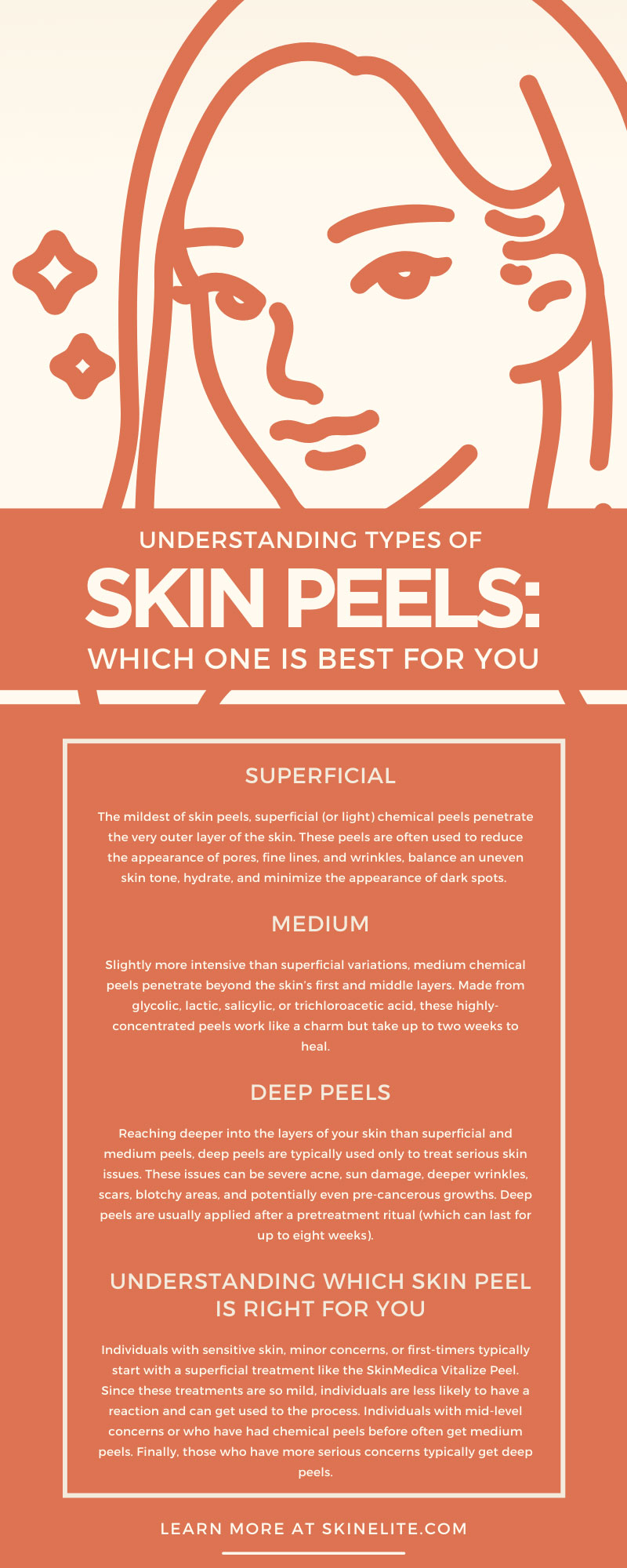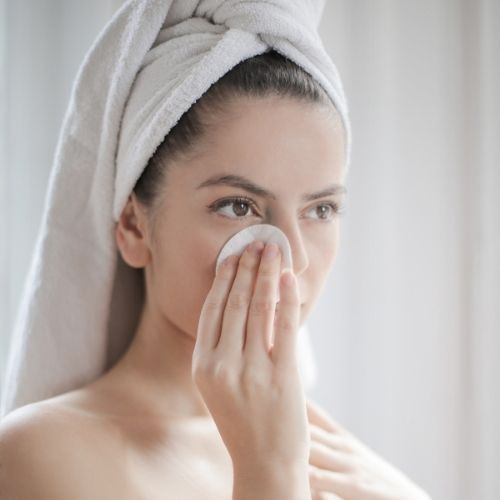Understanding Types of Skin Peels: Which One Is Best for You
Aug 3rd 2021
If your skin appears dull, tired, or sun-damaged, you may want to consider a chemical skin peel. These modern marvels are often thought of as the secret to vibrant, youthful skin. But what exactly are skin peels, how are they applied, and what are the different types? Even more importantly, which type is best for your skin?
When it comes to understanding the types of skin peels and which one is best for you, consider the facets we present in this article.
What Is a Skin Peel?
A skin peel – also known as a chemical peel – is a non-surgical cosmetic treatment. The acidic solution works to resolve a number of skin-related issues, from acne to hyperpigmentation, fine lines and wrinkles, and sun damage. While these treatments do not require surgery, skin peels are applied by a physician, aesthetician, or nurse.
Skin peels have grown in popularity over the years and are now a staple in most med spas and plastic surgery practices. Men and women enjoy these treatments due to the variety of conditions they assist with. Some of the benefits include:
- Improving acne
- Reducing fine lines and wrinkles
- Reducing the appearance of scarring
- Reducing the appearance of hyperpigmentation
- Soothing rough patches of skin
- Reducing the appearance of sun damage
- Brightening and hydrating for a more youthful appearance
What Are the Acids in Skin Peels?
Don’t let the word “acid” scare you. The acids used in skin peels are naturally derived from plants. In most cases, the acids are actually fruit extracts. Popular acids used in chemical peels include:
- Glycolic acid (derived from sugarcane; acne-fighting)
- Salicylic acid (derived from willow tree bark and leaves; acne-fighting)
- Lactic acid (derived from milk, fermented corn starch, and beets; brightens and smooths)
- Retinoic acid (derived from vitamin A; reduces fine lines and wrinkles)
- Phytic acid (derived from grains and legumes; brightens)
How Do Skin Peels Work?
Skin peels work through a complex process.
The first step in the process is application, where the professional applies the specific chemical solution to the designated area (usually the face). Then, the peel is allowed to sit. This is where the acid in the solution does its magic. Skin is lifted, wrinkles and fine lines fade, sun damage fades, and acne heals. When the time is up, the peel is washed off.
The 3 Most Common Types of Chemical Peels
Glycolic Skin Peels
Glycolic peels are excellent for individuals who want to combat hyperpigmentation, acne, sun damage, and dullness associated with aging. These brightening peels penetrate and exfoliate the skin’s outer layer, effectively shedding dead skin cells.
Salicylic Skin Peels
These peels are ideal for individuals who struggle with acne. Formulated to target oil glands, salicylic skin peels penetrate clogged pores to clear congestion and built-up oils. The acid used in this peel also has anti-inflammatory properties that soothe red, swollen, and irritated skin.
TCA Skin Peels
Individuals looking for relief from scarring, sun damage, fine lines and wrinkles, and pigmentation issues will find a salve in TCA peels. Those with extremely sensitive skin should use caution when using TCA peels, as they penetrate deeply into the skin and cause peeling for at least one week.
Different Categories of Skin Peels
There are different categories of skin peels: superficial, medium, and deep.
Superficial
The mildest of skin peels, superficial (or light) chemical peels penetrate the very outer layer of the skin. These peels are often used to reduce the appearance of pores, fine lines, and wrinkles, balance an uneven skin tone, hydrate, and minimize the appearance of dark spots. Superficial peels commonly utilize alpha-hydroxy and beta-hydroxy acids.
It is important to note that these peels are medical grade. While these are the mildest and most gentle options, those who are treated with them may still experience redness and minimal flaking. These peels typically take between one and seven days to heal.
Medium
Slightly more intensive than superficial variations, medium chemical peels penetrate beyond the skin’s first and middle layers. Made from glycolic, lactic, salicylic, or trichloroacetic acid, these highly-concentrated peels work like a charm but take up to two weeks to heal.
Deep Peels
Reaching deeper into the layers of your skin than superficial and medium peels, deep peels are typically used only to treat serious skin issues. These issues can be severe acne, sun damage, deeper wrinkles, scars, blotchy areas, and potentially even pre-cancerous growths. Deep peels are usually applied after a pretreatment ritual (which can last for up to eight weeks).
Individuals with darker skin tones should use caution with deep peels, as they may lead to hypopigmentation.
It can take up to three weeks for the skin to heal properly after receiving one of these peels.
Understanding Which Skin Peel Is Right for You
The different types and categories of skin peels can make it difficult to determine which is right for you. Additionally, it can be intimidating to choose—especially since these peels can reach deep into the skin.
Individuals with sensitive skin, minor concerns, or first-timers typically start with a superficial treatment like the SkinMedica Vitalize Peel. Since these treatments are so mild, individuals are less likely to have a reaction and can get used to the process. Individuals with mid-level concerns or who have had chemical peels before often get medium peels. Finally, those who have more serious concerns typically get deep peels.
Other factors to consider include what concerns you wish to address. Are you looking to unclog your pores, hydrate, and enjoy a more even skin tone? Do you wish to reduce the appearance of deep scars, severe acne, or sun damage?
In addition to determining which peel you think is best for your needs, it is advised that you speak to your doctor or aesthetician about your options. Their professional opinion will lead you in the right direction. They will consider your skin type, your skincare needs, and any possibilities for damage. Your doctor or aesthetician will likely not apply a peel that does more harm than good.


